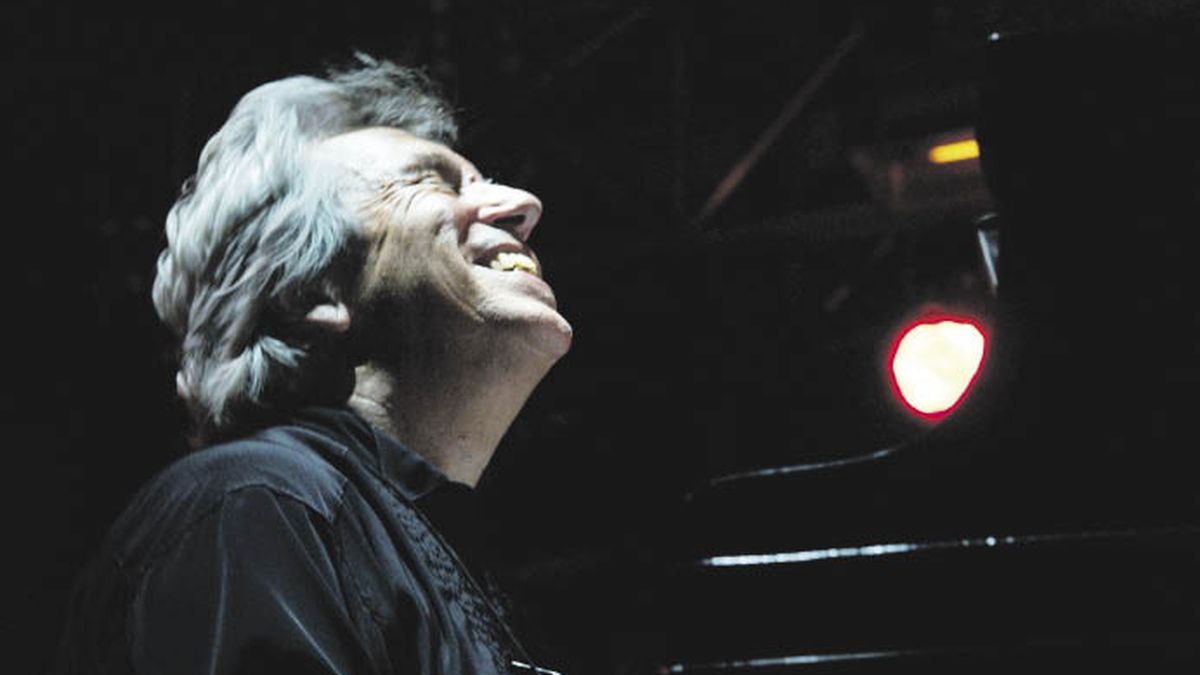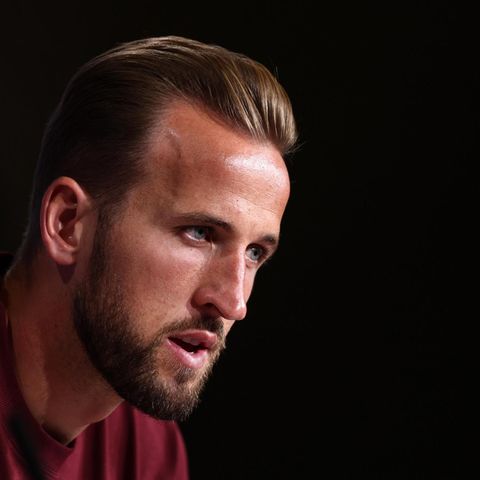Art Tatum was and will be the God of the piano.
Trying to tour with two grand pianos is not a very practical idea.
Navarro, a teacher who can teach jazz, was the teenager who, by chance, played the piano accompanying an Ella Fitzgerald who appeared after hours at the legendary Jamaica club, frequented by all the international visitors who came to give concerts in the Buenos Aires of the 50s. But above all, the great lesson that emerges from a life dedicated to music is that the most important thing, beyond the style, the genres, the instrument or the place, what matters is that the musician take your work seriously and have a good time doing it.
Nominated for a Latin Grammy for his latest album “Jorge Navarro & Amigos”, the member of rock and funk groups such as La Banda (Rubén Rada’s moment of greatest popularity) and unclassifiable but more massive groups such as La Banda Elástica, in the who supported Ernesto Acher with his piano, Navarro had projects that were cut short by the pandemic. But he is already taking them up again, starting with the face-to-face piano-double bass show with Arturo Puertas, “Jazz in good hands” (Friday at 8 pm on Bebop).
“We are going to play essential jazz standards that I have enjoyed all my life, which can range from Cole Porter to Gershwin, passing through Jobim or classics like “Tea for two” or “Hallelujah” that I met on the piano of Art Tatum in his recordings of the ’30s. Oscar Peterson was great, but for being inspired by Tatum. Of course, I play them in my style, if I had a defined style, something I’m not sure about”.
An essential quality of Navarro is his ability to adapt to changes in style and even to different musical genres. His career is full of providential coincidences, beginning with the fact that he learned to play the piano before learning to read, despite the fact that there was nothing special that attracted him to the keyboard or to musical language. This is how the author of cult records such as “Navarro con polenta” tells it in the dialogue with this newspaper: “When I was a boy it was customary for the girls to study classical ballet and the boys some musical instrument. Mom used to be a music teacher, but there was no piano at home. We did have a neighbor who taught piano. I, I don’t know why, I started going”.
Discovery
It is clear that the Navarro boy learned quickly, but he confesses that he did not put much effort into it because the classical scores that he had to study did not attract him much. But then, five years later, “polenta” appeared when listening to the dixie orchestra of Bing Crosby’s brother in a rather random way. “That music was so different from the classical music that my teacher taught me. I really liked it, even without knowing what it was. I asked my older brother and he explained to me what it was. And before long he showed up with some old 78 rpm records of the essential classics of the genre. They were things that the neighbor was not going to teach me to play on her old German upright piano, so I started listening to jazz. I was already 13 or 14 years old and I was beginning to play the piano, very danceable, like Benny Goodman, and all of a sudden we were already working on dances in neighborhood clubs. And out there on a Saturday we would go from one club to another to play on the same night. Sometimes before a typical orchestra. So suddenly, we were playing before D’Arienzo. I started working professionally as a musician, and Dad bought me an English upright piano that stayed with me for about 50 years.”
The adolescent Navarro also played among the clouds of smoke in the bass cabarets where great musicians played, whether jazz or avant garde tango like Piazzolla. That environment, he assures him, did not cause him any conflict with his family. “When he went to Jamaica, we never left before 4 am And of course, there were ladies who ‘served drinks.’ But I listened to great musicians, mostly jazz, and sometimes they let me play the piano, like the night Ella Fitzgerald came on stage. I saw the jazz masters from here and from the US, who came often. I was almost sure that they played so well because of everything they drank, smoked or secretly consumed. Many years passed before I understood that they did not play so well because of that but in spite of it”.
But the jazz scene included another less sinful environment, the headquarters of the Asociación Cristiana de Jovenes, on Reconquista street: “On Monday nights it became a temple of jazz, and the jam sessions could include Enrique “Mono ” Villegas or more of my generation, like Chivo Borraro, or my great friend Gato Barbieri. I learned a lot there, for example, the Miles Davis revolution. I listened to “Kind of Blue” over and over again, because I needed to understand Wynton Kelly’s piano.”
In 1955 there was another musical revolution, which Navarro ignored. “I never liked rock, not then or ever,” says Navarro, who once explained that with Elvis first, and with the Beatles later, the jazz scene ended and he was left without a job. Perhaps for this reason, after marrying Susy – this year they celebrate their 55th anniversary – he chose to form a non-jazz band, “The Sound & Company” with four Creole colleagues with whom they traveled to the United States:” It was 5 years , from 1969 to 1974, we were all married and traveled with our wives, but I was the only one who took the entire tour to my wife, to my newborn son. We played at the Sahara in Vegas, and at bars in Detroit or Buffalo that were mobsters. We did covers of songs of the time combining four basic instruments with our voices, in the style of a band for bars and hotels”. After confessing that he was one of the 4 voices, he pretends to be offended and says: No, I never sang, they were background choirs!
“At one point my son had to go to school, and we couldn’t give anymore, so we kindly separated the group and we went to Puerto Rico. We were there for a year and a half. For me it was a “saudade”, to the point that during all that time I never put a finger on a piano. Which leads us to the fact that, for his personal reasons, when everyone left Argentina, Navarro arrived with his family. And almost immediately, he was offered to record an instrumental jazz rock album, but funky and unpretentious. We are talking about the cult album “Navarro con polenta”, which begins with the most amazing funky cover of Led Zeppelin’s “Black Dog”. “I don’t like rock, and I never liked Led Zeppelin, but when I heard that song I thought it was enough to make it funky, that’s where the idea came from. And now that I think about it, I never played it live”.
The 1977 record is so current that it recently got a German edition on bright red vinyl and, even more incredible, a 45 rpm single from the Japanese cult label Misakatsu, which took two tracks from the album, “Funk Yourself” and “ Let’s share the funky” recreating a single that never existed. “In all my life I must have composed just a handful of songs, two are on that album.” One of them is the anthological “Después de la polenta”, a brilliant epilogue that transforms funk into classic jazz to which Navarro always returns. He also composed the last track of one of his most successful albums, “La Banda”, led by Rubén Rada, with hits like “Rock de la calle”, although according to Navarro it was a wasted success: “we didn’t last even a year, because almost They were all irresponsible.”
Instead, he assures that the best, due to the massive success and general happiness, were the 9 years with Ernesto Acher and the other colleagues from “La Banda Elástica”, without caring that he had nothing to do with jazz fans. . “It was for the popular public seriously, and we had a great time all the time.” And playing Gershwin at the Colón with an orchestra conducted by Acher was something serious. But more simply Navarro confesses the happy surprise he experienced when, after having started the Gershwin project with only two dates in a Buenos Aires theater, he understood that they were going to have to put on more than 20 extra performances playing “Rapsodia en Blue”. And what makes him most nostalgic was his duet with the jazz master Baby López Fürst, from which the lesson about not going around with two grand pianos (“at one point we asked them to wait for us with the two grand pianos in each place, but that never worked out, and in the end we found some digital keyboards programmed to sound like a grand piano, and it made no difference”). The next great episode of Navarro’s biopic is his project “Jobim sinfónico” with Ernesto Acher and arrangements by Jorge Calandrelli.
Source: Ambito
David William is a talented author who has made a name for himself in the world of writing. He is a professional author who writes on a wide range of topics, from general interest to opinion news. David is currently working as a writer at 24 hours worlds where he brings his unique perspective and in-depth research to his articles, making them both informative and engaging.




